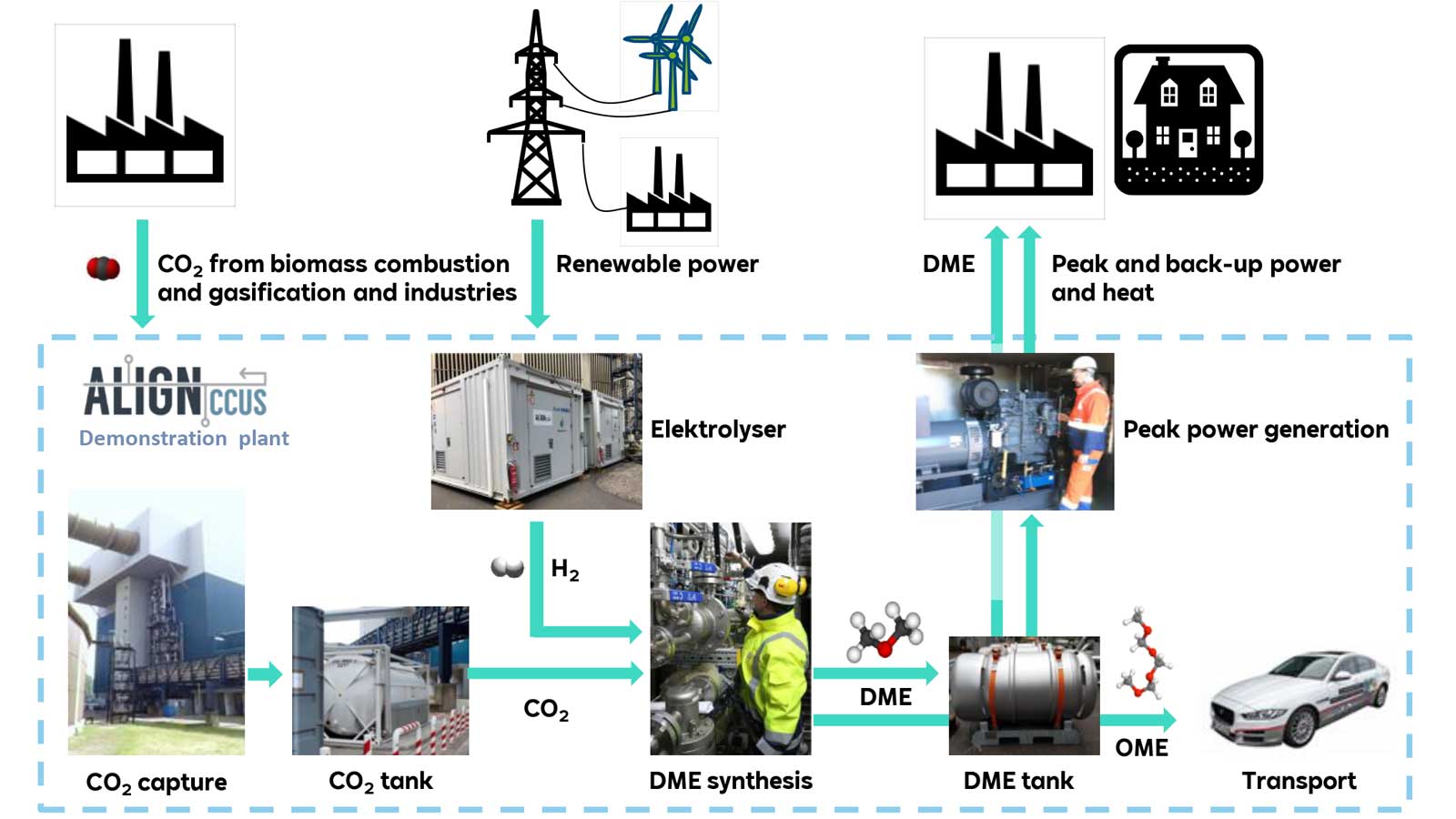Upcoming problems
Things that may sound promising in terms of environmental and climate protection may, however, bring problems with them in other areas. The fluctuating infeed of electricity generated using wind and solar power necessitates a huge expansion in electricity storage systems. The goal of electrifying urban automobile traffic and increased electric heating, both in households and for the supply of process heat, is further increasing electricity needs and making the problems worse.
One possible approach for storing energy that will simultaneously drive climate protection forward is Carbon Capture and Utilisation, or Carbon Capture and Usage (CCU). CCU refers to the capture of carbon dioxide (CO2) from exhaust gases from combustion in particular, and its subsequent use in further chemical processes.
Research projects
RWE is involved in a whole raft of CCU research projects, in which the infrastructure at the RWE Power AG Innovation Centre in Niederaussem serves as a platform for the construction of test facilities. These projects demonstrate the CCU process chains in both small and medium scale, from carbon capture to the synthesis of usable materials with the aid of hydrogen produced from water using electrolysers, to the utilisation of usable CCU materials, and thus evaluate various technologies and products from the perspective of subsequent large-scale implementation.


